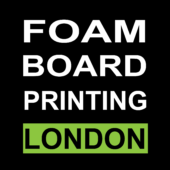Exploring the Composition of Foam Board
Foam board, also known as foam core or foam sheet, is a versatile material utilized in various applications ranging from crafting and art projects to construction and signage. It’s valued for its lightweight nature, rigidity, and ease of use. But what exactly is foam board made of? Let’s delve into its composition and understand why it’s such a popular choice across different industries.
Composition:
- Polystyrene Foam Core: At the heart of foam board lies a core made primarily of polystyrene foam. Polystyrene is a synthetic polymer known for its insulating properties, durability, and lightweight nature. In the case of foam board, polystyrene foam is typically expanded to create a cellular structure that traps air within, enhancing its insulating abilities while keeping the material lightweight.
- Paper or Plastic Facings: The foam core is sandwiched between facing materials, which provide stability and protect the foam from damage. These facing materials can vary. In most cases, foam boards feature paper or plastic facings.
- Paper Facing: Foam boards with paper facings are commonly used in art and crafting projects. The paper facing allows for easy customization with paints, markers, or adhesives. It provides a smooth surface for drawing or printing graphics.
- Plastic Facing: Foam boards with plastic facings are preferred in applications where durability and water resistance are crucial. The plastic facing protects the foam core from moisture and damage, making it suitable for outdoor signage, presentations, or architectural models.
Manufacturing Process:
The manufacturing process of foam board involves several steps:
- Foam Expansion: Polystyrene beads are expanded using steam to create the foam core. During this process, the beads are heated, causing them to expand and fuse together, forming a solid yet lightweight foam.
- Facing Attachment: Once the foam core is formed, it is sandwiched between facing materials. This can involve laminating paper or plastic sheets onto both sides of the foam core using adhesives and pressure.
- Cutting and Shaping: The foam board is then cut into various sizes and shapes to meet the requirements of different applications. Precision cutting ensures uniformity and consistency in the final product.
Conclusion:
Foam board’s composition of polystyrene foam core sandwiched between paper or plastic facings makes it a versatile material with a wide range of applications. Its lightweight nature, rigidity, and ease of customization have made it a favorite among artists, architects, educators, and hobbyists alike. Whether it’s for creating vibrant art pieces, constructing architectural models, or crafting professional signage, foam board continues to be a go-to choice, offering a perfect blend of functionality and versatility.
